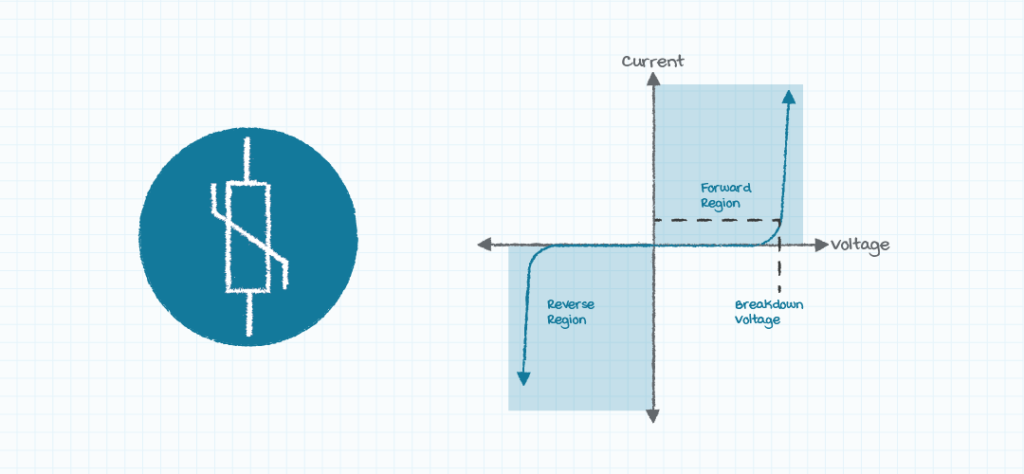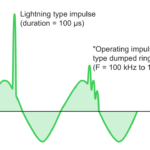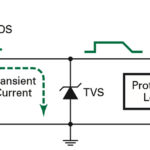By Ron Stull, CUI, Inc.
Any mains-powered electrical device is vulnerable to voltage surge. These completely unpredictable events can take many forms: from modest power spikes during normal operation to massive power surges caused by an external lightning strike. To prevent damage and downtime, electrical equipment and circuits need to be provided with adequate surge protection.
This article explains how to identify the likely causes of voltage surges in your application, what regulatory surge test standards apply, and the different types of surge suppression devices that are available.
Assessing surge risk
To determine the appropriate level of surge protection for our power supply, we must predict the types of surges it is likely to encounter. Some systems may experience very common and manageable over-voltages, while others may be vulnerable to more extreme surge events. The three main causes of surges are:
- Lightning
- Load Transients
- Faults
Meteorologists estimate that three million lightning flashes occur every day and the earth is hit more than 40 times every second1. So, it is no surprise that lightning strikes, whether direct or indirect, are a common cause of surge events in electrical plants (Figure 1). They carry far more current at much higher voltages than most systems are rated for. If the appropriate level of protection has not been applied, the immediate failure of electronic devices is likely.
More modest surges on the AC supply line can also be caused by other devices on an electrical circuit switching on or off. While these actions are usually part of normal operations, they can still produce the rapid and significant current changes that induce voltage spikes in the cabling.
Faults can also be the source of electrical surges. The failure of system components and devices can cause unintentional shorting or opening of circuits, which trigger transient voltages and currents in other parts of the system.
Multiple factors including location, cabling, and the level of surge protection applied (internally or externally) to the power supply input will affect the intensity and magnitude of the surge voltage at the power supply input.
Protection levels defined
Classification of surge risk and guidance on providing the necessary level of protection is available in several industry standards. IEC 61000-4-5 from the International Electrotechnical Commission is the most common for power supplies. It is referenced in many national immunity standards, such as EN 55035 which sets immunity requirements for multimedia equipment.
IEC 61000-4-5 defines a standardized test method and different levels of protection based on installation class and coupling methods (Table 1). Installation classes 3-5, which have test requirements ranging from 1kV to 4kV, are of the most relevance for DC power supply.

Surge protection devices
Protecting power supplies and their loads from surges typically requires some form of internal or external surge protection device or circuit. Clamps and crowbars are the two main types of surge protection circuits.
Voltage clamps prevent the voltage from exceeding the chosen clamping voltage. During a surge event, the voltage will be held at the clamp voltage and current will be diverted through the clamp until the surge has passed.
The components most commonly used in these circuits are transient voltage suppression diodes (TVS), metal-oxide varistors (MOV), and gas discharge tubes (GDT) .

Transient Voltage Suppression Diodes
TVS diodes are designed to absorb the excess energy of a voltage spike and thus clamp it. They can be either uni-directional or bi-directional. Like a Zener diode, TVSs have a knee voltage above which the diode will begin conducting. Under surge conditions, the voltage is clamped at the knee voltage, and the excess energy is diverted away from the power supply.
Varistor Clamps
Voltage-sensitive metal oxide varistors (MOVs) provide a softer clamp voltage and have slower reaction times than a TVS diode. Bidirectional in operation, MOVs have high resistance at low voltage and low resistance at high voltage. Their low cost and surge handling capabilities make them a common choice for surge protection in power supplies. However, MOVs also wear out and can handle only a limited number of surge events. (Figure 2)

Gas Discharge Tubes
Gas discharge tubes (GDT) are commonly used as crowbar circuits. Crowbars take a different approach to surge protection. Rather than limit the voltage to a maximum value, the crowbar will short the circuit nodes together, bringing the voltage close to zero. GDTs, like diodes, act as a voltage-dependent switch. They behave as an open circuit normally and a short circuit when the voltage threshold is exceeded. GDTs can handle more current but also tend to be the slowest reacting surge protection device. Power supplies sometimes use them in conjunction with other methods for a more robust solution.
Due to the varying speed and energy handling capabilities of each device, it may be necessary to combine clamp types to achieve the desired surge protection (Figure 3).

Off-the-shelf power supplies
Designers need to take care when specifying off-the-shelf power supplies because the degree of surge protection available is highly variable. Board mount power supplies offer a range of options, from no internal protection to the maximum level of protection. While manufacturers often provide reference designs to improve the inherent performance level, the designer should check that the manufacturer’s external circuit meets the appropriate performance level for the application.

Selecting the right power supply
Surge protection should always be deployed as part of a systematic approach, which takes into account the application, the risks, and the relevant standards. The frequency and intensity of surge events can vary enormously, but there are a number of devices available that can be applied alone or in combination to achieve the desired level of protection. Experts like CUI can help select the right power supply for your application.
About the author
 Ron Stull is an experienced engineer with knowledge and experience in analog and digital power, as well as ac-dc and dc-dc power conversion. Since joining CUI, inc. in 2009, he has served in key roles across different facets of engineering, including application support, test and validation, and design. Today, he shares his knowledge of power engineering with engineers worldwide to help educate about safe, reliable power supplies. Ron’s articles have been featured in publications including ElectronicDesign, EEJournal, All About Circuits, Electric Specifier, and more.
Ron Stull is an experienced engineer with knowledge and experience in analog and digital power, as well as ac-dc and dc-dc power conversion. Since joining CUI, inc. in 2009, he has served in key roles across different facets of engineering, including application support, test and validation, and design. Today, he shares his knowledge of power engineering with engineers worldwide to help educate about safe, reliable power supplies. Ron’s articles have been featured in publications including ElectronicDesign, EEJournal, All About Circuits, Electric Specifier, and more.
References
- Source of lightning statistics: https://www.metoffice.gov.uk/weather/learn-about/weather/types-of-weather/thunder-and-lightning/facts-about-lightning








Leave a Reply